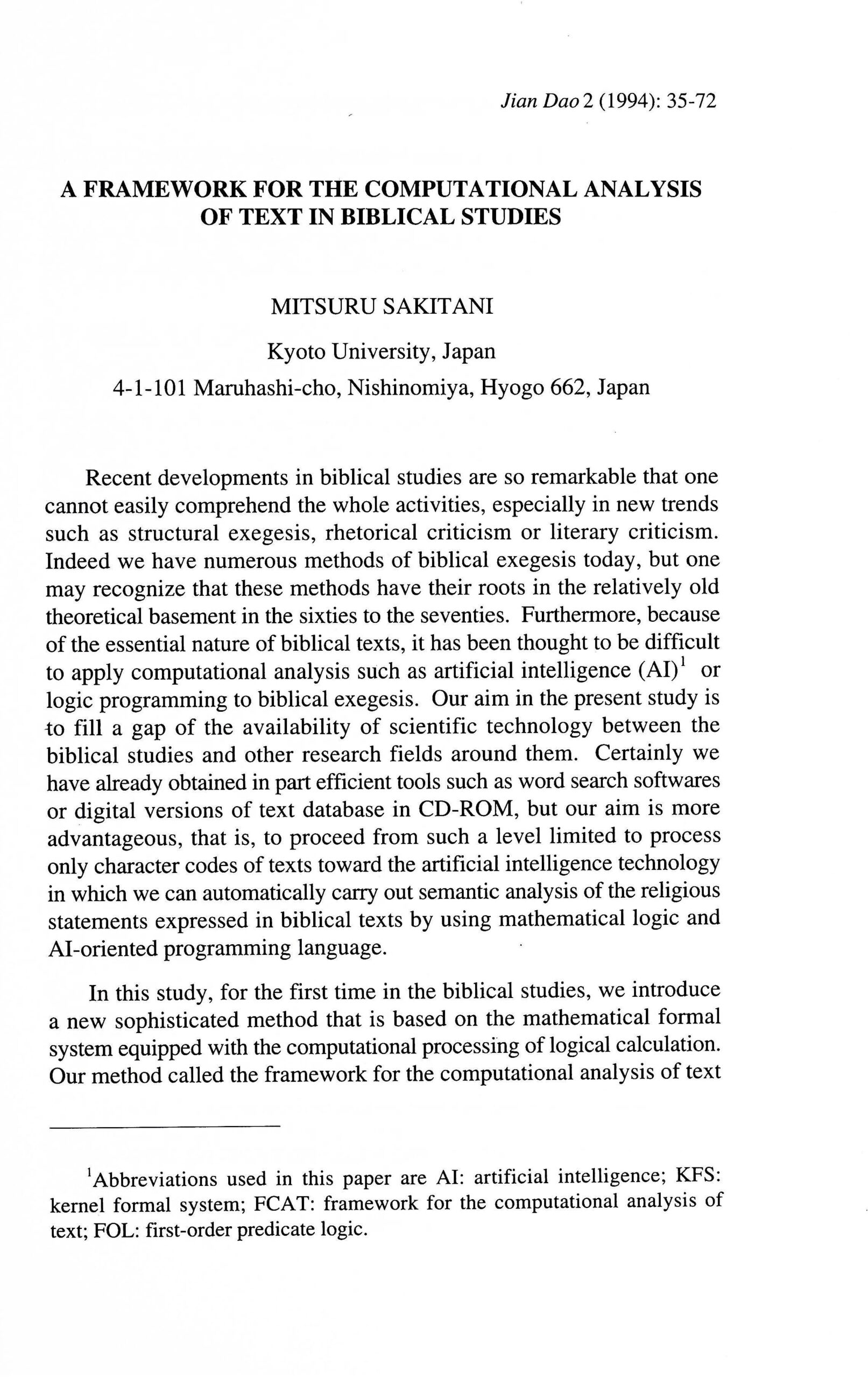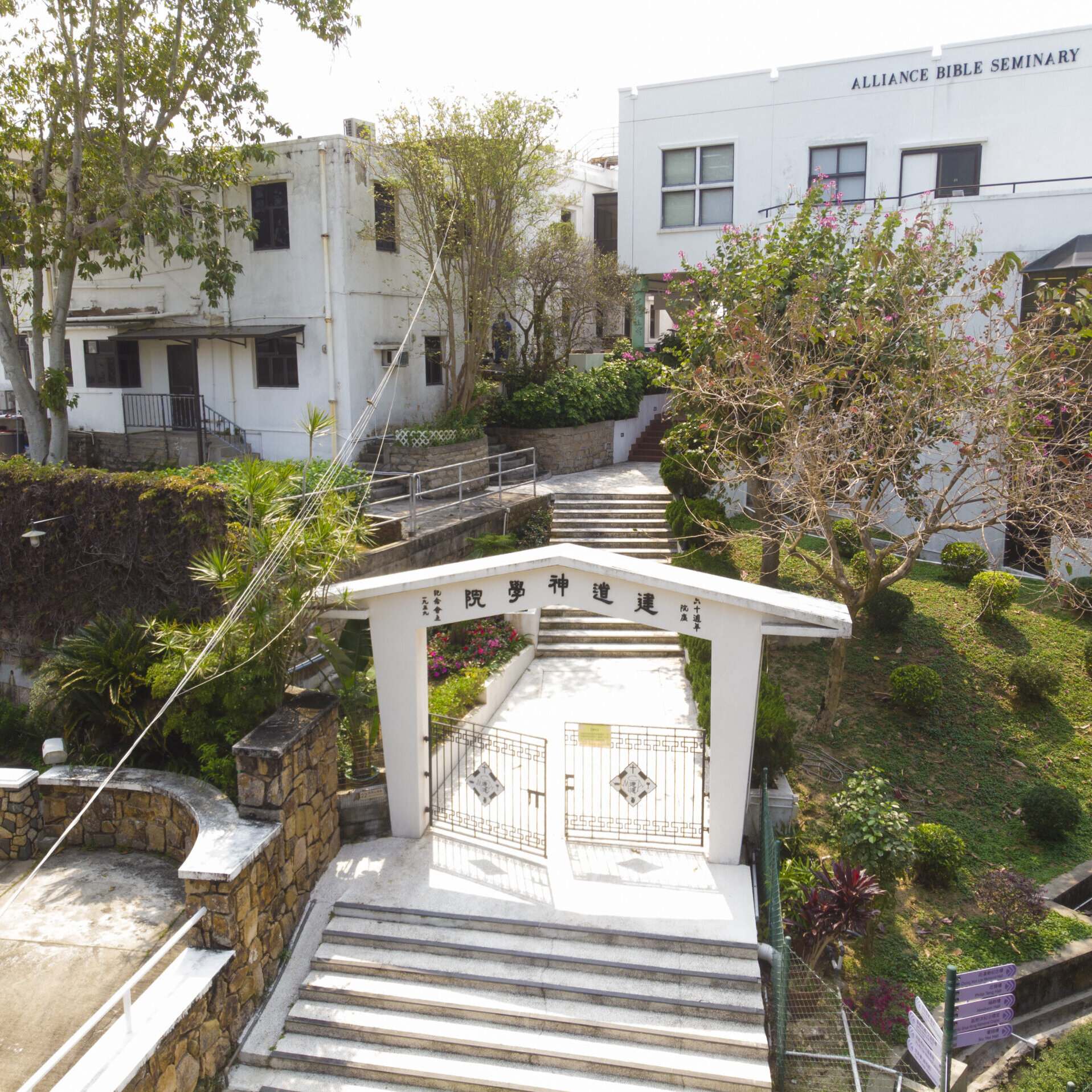A Framework For The Computional Analysis Of Text In Bibical Studies(電腦分析文本架構之聖經研究) / Mitsuru Sakitani 崎谷滿
撮要
作者在本篇文章中討論用電腦分析經文的架構(Framework for the Computational Analysis of Text [FCAT])來研究聖經。FCAT包括三個連續 的步驟:一、替KFS (Kernel Formal System)下定義,它包括最小組成部分、常數、變數、關係式、述語、universe、及字元;二、將KFS接駭至其他先進的正規(formal)系統,例如使用Prolog及快思集論(Fuzzy Set Theory)寫成的邏輯程式(製造商根據該程式製成Fuzzy Prolog的簡化版);三、運用KFS來研經,而研經法則是傳統的編修鑑別及結構式研經法。作者在本文化展示一些用Prolog寫成的程式。運用FCAT,聖經學者:一、能夠有共同工具來使相異之研經法所得之成果得以相互沛通;二、得到一個强力的資料處理工具;三、面對那些意思不淸晰的經文,則可在理論上佔優勢。
ABSTRACT
In this introductory study, the framework for the computational analysis of text (FCAT) in bibical studies was presented. FCAT consists of three continuous steps: first, definition of a kernel formal system (KFS) that includes minimum components, a constant, a variable, a relation, a predicate, a universe and a space; second, extension of KFS to other advanced formal systems such as logic programming by Prolog and fuzzy set theory, which thereafter provides a simplified version of fuzzy Prolog; third, application of KFS to conventional biblical methods such as redaction criticism and structural exegesis, in which several programs written in Prolog were demonstrated. By FCAT, biblical scholars could obtain (a) a common tool to share information between diverse biblical methods, (b) a powerful computational tool, and (c) theoretical advantage suitable to biblical texts that are essentially ambiguous in nature.
原載於《建道學刊》2期(1994年7月),頁35-72。
最新文章
新手牧者研究計劃(三):新手牧者的身心靈狀態 / 盧慧儀
2025 年 11 月 19 日
【教牧退休】好好理財 退而不憂 / 林本利
2025 年 10 月 1 日
【教牧退休】生前身後的管理:平安三寶 / 陸文慧
2025 年 10 月 1 日
編輯精選
[電子書]困境與抉擇:「建道研究中心30週年誌慶」跨學科研討會論文集/廖炳堂、倪步曉主編
2025 年 1 月 2 日
從梧州到長洲:建道神學院125年的挑戰與恩典 / 陳智衡
2023 年 10 月 1 日
微小教會的見證/高銘謙
2023 年 6 月 1 日







